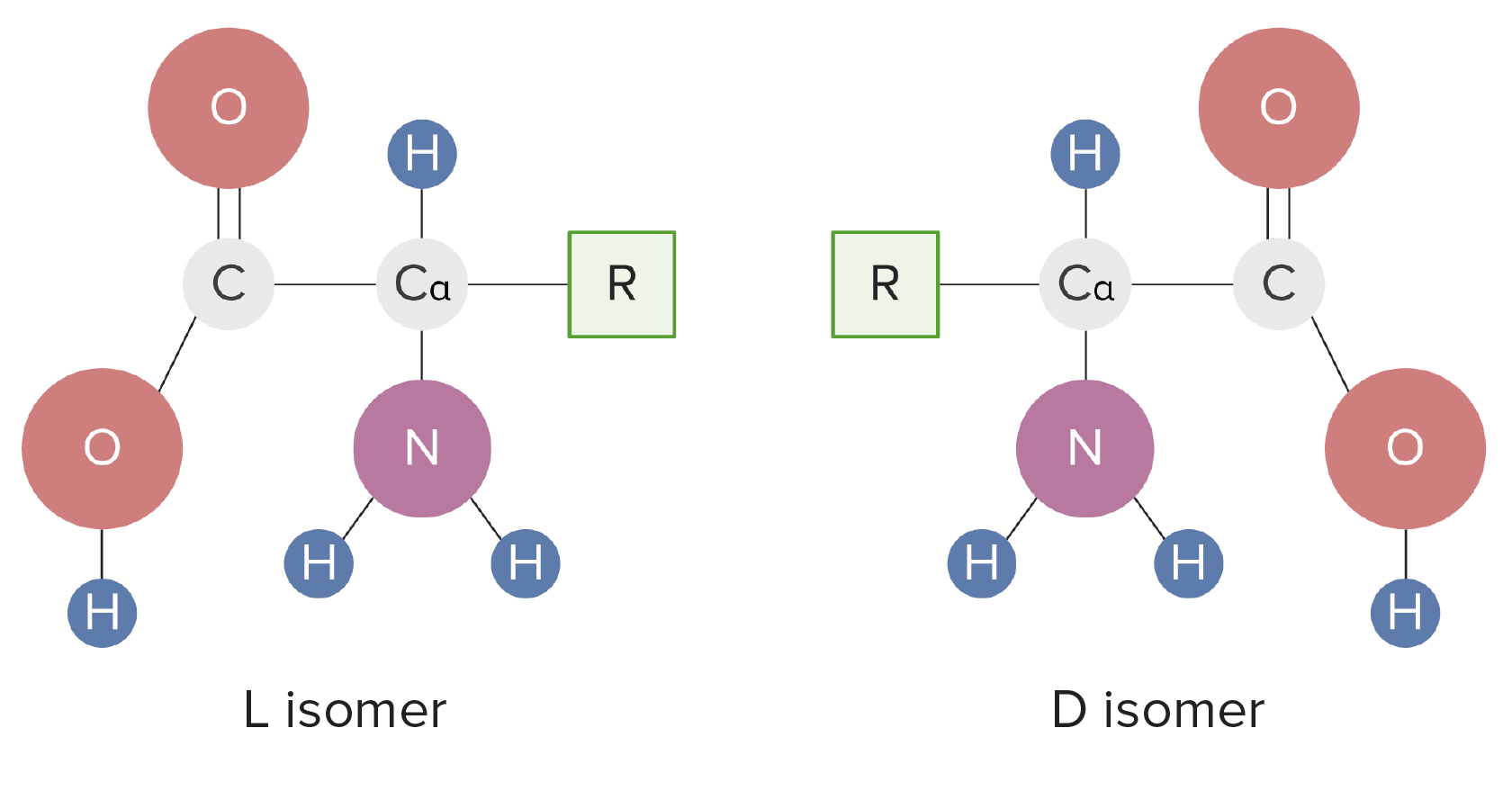Playlist
Show Playlist
Hide Playlist
Hydrophilic and Ionic R-groups – Amino Acids
-
02 Basic AminoAcids.pdf
-
Reference List Biochemistry.pdf
-
Download Lecture Overview
00:02 The hydroxyl containing amino acids are hydrophilic, and because the hydroxyl that's contained on the ends of each of these can interact with water. They include serine, threonine, and tyrosine. Again. serine and threonine are very similar to each other, differing only in a carbon; tyrosine as discussed before has an aromatic ring, but it also contains a hydroxyl group. At physiological pH, we can see that serine, threonine and tyrosine all have a zero charge arising from the positive charge on the alpha amine and the negative charge on the alpha carboxyl group. As I noted previously, the hydroxyl group on tyrosine can ionize at a high pH, but this is not a factor at physiological pH. 00:51 The next amino acid is one of the more interesting amino acids and it's cysteine, you've seen it previously. Cysteine has an R group that contains a sulfhydryl group as shown here. 01:02 Now the sulfhydryl group gives cysteine some very interesting properties, you'll note that it ionizes at a relatively high pH, that of 8. It's not too far from physiological pH, but we tend not to think of this group having a negative charge and the reason is that because the sulfur that is found in the R group of cysteine is very reactive. If you place two cysteine sulfhydryls next to each other, what you will see is that they will form a covalent disulfide bond with each other and when they do that, they form a very tight linkage that helps to stabilize the structure of proteins. The overall charge of cysteine, like the other amino acids at physiological pH is zero. 01:50 The next two amino acids are those that are called the carboxamide or carboxyamide and these include asparagine and glutamine. These two amino acids are related to the amino acids aspartic acid, and glutamic acid. The difference being that in the case of these two amino acids, the hydroxyl in the R group of the amino acids of aspartic acid and glutamic acid are replaced by an amine, giving rise to the carboxamide group that I described earlier. These amino acids interestingly have for example at physiological pH, no ionization in their R group, the NH2 does not ionize at all. So this is in contrast to what we saw with aspartic acid and glutamic acid. 02:38 The last group of amino acid that I will talk about are those that ionize and form a positive charge. These are the so-called basic or amine containing amino acids. Within their R groups you can see that each have different forms of amines that exist. You'll note that these basic amino acids also have longer side chains than the acidic amino acids did. Now this group includes arginine, lysine and histidine. And at physiological pH these molecules will tend to have a positive charge, and because of this we can see that the overall charge of each molecule is +1. Now arginine and lysine are interesting in that they are both abundantly found in proteins called histones. Histones are positively charged proteins, the positive charge arising from the arginine and lysine, that are wound with DNA to make chromosomes. 03:36 The positive charge of the amino acids here is attracted to the negative charge of the phosphate backbone of DNA, and allows them to interact considerably. 03:46 Lysine is a target for acetylation, that is the attachment of an acetyl group to the amine at the end of lysine. The effective acetylation of lysine is to cover up the positive charge. 04:00 And so if you have a DNA that is interacting with the positive charge of lysine and you cover it up with an acetyl group, you change the nature of the interaction between the protein that contains the lysine and the DNA. And this has some very important implications for transcription. 04:18 The last amino acid here is histidine, and it's notable because in contrast to the R groups of arginine and lysine which have pKa values both well over 10, histidine's R group has a pKa value of about six. Now this is close to physiological pH and means as a result, that histidine can readily ionize or deionize at physiological pH. This property turns out to be very important in the active site of enzymes where charge differences can make a tremendous difference for catalysis.
About the Lecture
The lecture Hydrophilic and Ionic R-groups – Amino Acids by Kevin Ahern, PhD is from the course Biochemistry: Basics.
Included Quiz Questions
Which of the following amino acids play an important role in the interaction of histone proteins with the DNA?
- Lysine
- Tyrosine
- Tryptophan
- Phenylalanine
- Glutamine
Why does the R group on cysteine makes its net charge zero at physiological pH?
- The sulfur in the R group easily forms disulfide bonds with other cysteines.
- The hydroxyl in the R group is very reactive.
- The benzene ring in the R group is very reactive.
- The benzene ring in the R group is very stable.
- The carboxyl group easily forms ester bonds with other cysteines.
Customer reviews
4,0 of 5 stars
| 5 Stars |
|
1 |
| 4 Stars |
|
0 |
| 3 Stars |
|
1 |
| 2 Stars |
|
0 |
| 1 Star |
|
0 |
extremely helpful when the amino acids are divided in functional relevance.
This video did not really show Aspartic Acid or Glutamic Acid?




